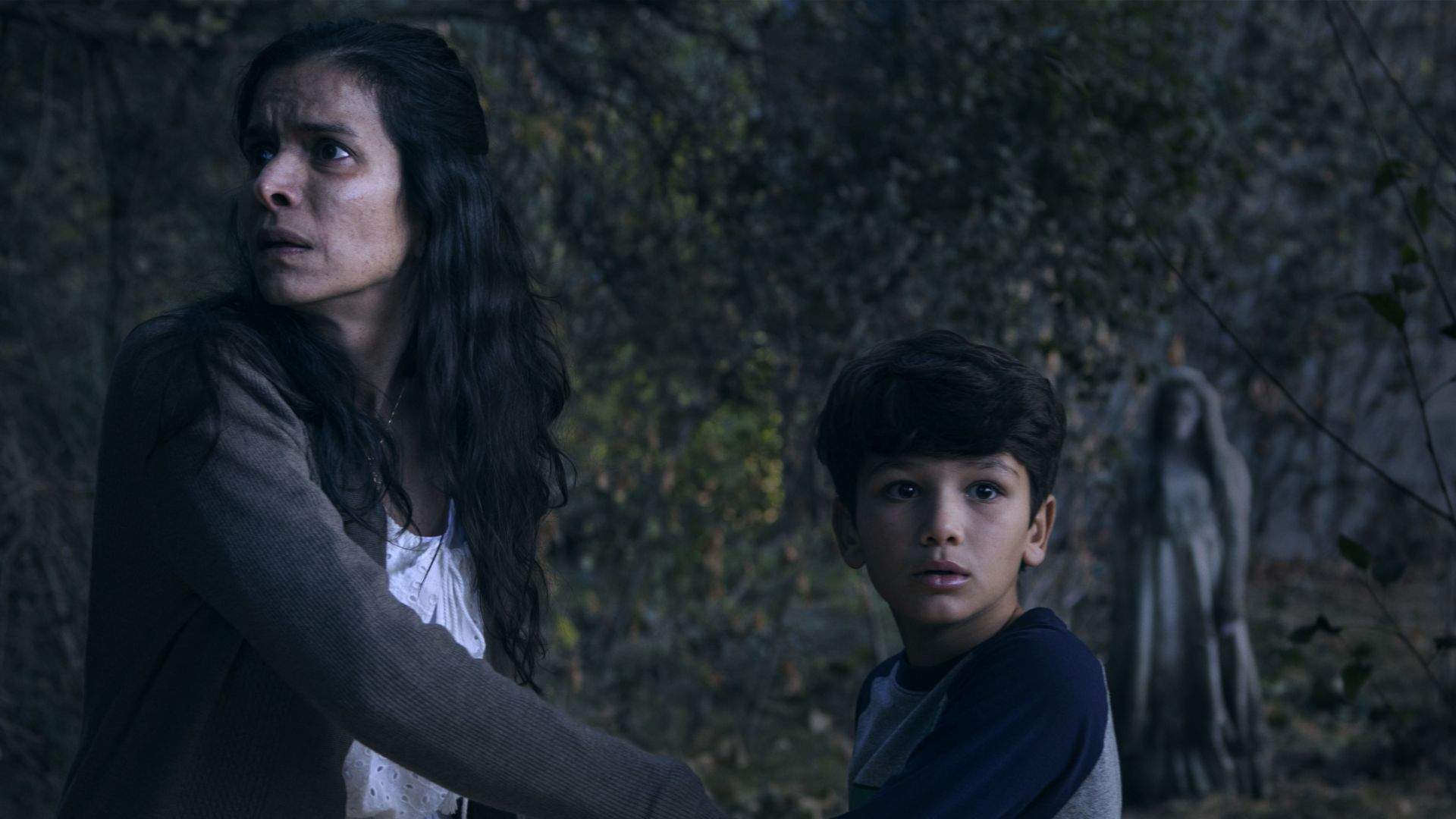The Curse of the Weeping Woman
The sixth film in the Conjuring franchise serves up a few effective bumps and jumps, but also exposes a worrying thematic undercurrent.
Overview
If there's a force as frightful as facing certain death, humanity is yet to find it. Knowing that everyone who lives will die is the most terrifying thing that anyone will ever have to deal with, as well as the most obvious and commonplace — and it's also the fear-inducing bogeyman that continues to spook the horror genre. In the form of killer ghosts, malingering spirits and demonic forces from the great beyond, the inescapable end also haunts the Conjuring universe, to the surprise of absolutely no one. The growing franchise's other source of scares, however, is perhaps much less expected.
In The Conjuring, the flick that started the series, a family grapples with the spectre of an accused witch. In its sequel, as well as in spin-off The Nun, evil takes the form of a bride of Christ. In the Annabelle films, a doll is possessed by a dead girl, turning murderous. And now in The Curse of the Weeping Woman, the saga finds its shocks in a mother who turns into a child-drowning apparition. This unsettling franchise might be based on the work of paranormal investigators Ed and Lorraine Warren, and on Mexican folklore in the current movie's case, but as each new instalment shows, it's not only scared by supernatural stories of death. Womanhood and its symbols are also something to fear here. Women and children are usually the casualties, too. As genuine spooks increasingly give way to haunting by the numbers, the series' need to vilify and victimise its way to box office success is blatant, lazy and more concerning than anything on-screen.
The Curse of the Weeping Woman begins with its own origin story, introducing viewers to the tale of La Llorona. In Mexico in 1673, a beautiful young woman (Marisol Ramirez) lives a happy life with her husband and two sons, until she's driven to kill her boys in the river — and destined to keep trying the same trick with other children for all of eternity. Three centuries later, Los Angeles social worker Anna Tate-Garcia (Linda Cardellini) crosses paths with the deadly spirit as part of a case, when she finds that something is amiss with one of her clients (Patricia Velásquez). Soon, La Llorona has her sights set on Anna's kids (Roman Christou and Jaynee-Lynne Kinchen), and only a renegade former priest (Raymond Cruz) can help the fearful family.
Directed by first-timer Michael Chaves, The Curse of the Weeping Woman polishes up its formulaic parts more effectively than it might initially seem, especially six films into a flagging franchise. There's nothing new in its bumps and jumps, but many of those creepy moments elicit the right visceral response — while no one will be leaping out of their chairs, viewers might find themselves inching forward automatically. Alas, horror movies aren't just about shocks, scares and keeping a series going in a dutifully unnerving manner. They're not just about swooping camerawork and stalking through a spooky house either, although those are two techniques that the picture also uses well. Conjuring up a momentary reaction lasts for just that, a moment. Retaining audience interest between bouts of ghostly mayhem is much more difficult, particularly given that screenwriters Mikki Daughtry and Tobias Iaconis are as eager to stick to cliches as they were in their last script: teen illness weepie Five Feet Apart, which is also currently in cinemas.
Many a routine scarefest has found success by taking the same route, which is why such boilerplate films keep appearing. Many an average movie has squandered a great actor — here, the committed Cardellini — within generic horror material. But plonk all of the above in a fast-expanding series that keeps pulling the same stunt, and it wears thin. Specifically package it with another supposedly terrifying tale about an unhinged symbol of womanhood wreaking havoc, and it grates louder than the creakiest of doors and floorboards. What's scariest in The Curse of the Weeping Woman isn't the fact that it lays bare the Conjuring Universe's reliance upon frightening symbols of femininity, but that it makes it plain in such an unashamed way. It might make sense to turn the bringers of life into harbingers of death, preying upon existential worries in the process, but at this point in the franchise it's also wearyingly, disappointingly easy.





